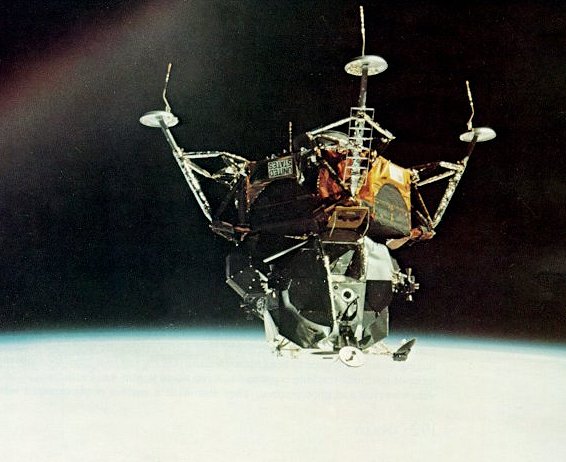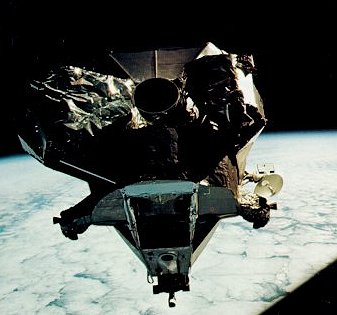















|

|
| First manned flight of an unearthly spacecraft (it couldn't survive atmospheric reentry) took place over the cloud-shrouded Sahara, above. Note the contact probes projecting from the footpads, and the ladder leading from the "front porch" with their "golden slippers" boot retainers. Below, after its landing stage has been jettisoned, the lunar module returns from the successful completion of the first rendezvous. Before docking begins, it rotates in front of CM windows to be inspected for possible damage. The bell of the vital ascent engine protrudes from a nest of foil thermal insulation. |

|


